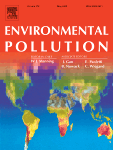Microplastic pollution in deep-sea sediments
 We have all heard the phrase: "We know more about the surface of the moon than the deep sea". Unfortunately, this is not exaggeration: the deep sea is the largest ecosystem on Earth, but also one of the least studied despite it harbouring a high biodiversity and a wealth of resources. Sadly, the deep seafloor is still, for most people, out of sight and therefore out of mind. This has encouraged the dumping of waste of all sorts into deep waters. For centuries, this was organic, degradable matter. Now, our solid wastes often contain synthetic elements, plastics in particular. In recent years, more and more reports have been published that demonstrate the large presence of plastic litter in the deep sea: the seafloor of the Mediterranean, Atlantic canyons and even Arctic waters are covered with plastic litter. Recently, our lab added another pollutant to the list: for the first time ever, microplastics were recorded in deep-sea sediments originating from several location worldwide. These results show that microplastics have penetrated the marine environment to a larger extent than previously assumed.
We have all heard the phrase: "We know more about the surface of the moon than the deep sea". Unfortunately, this is not exaggeration: the deep sea is the largest ecosystem on Earth, but also one of the least studied despite it harbouring a high biodiversity and a wealth of resources. Sadly, the deep seafloor is still, for most people, out of sight and therefore out of mind. This has encouraged the dumping of waste of all sorts into deep waters. For centuries, this was organic, degradable matter. Now, our solid wastes often contain synthetic elements, plastics in particular. In recent years, more and more reports have been published that demonstrate the large presence of plastic litter in the deep sea: the seafloor of the Mediterranean, Atlantic canyons and even Arctic waters are covered with plastic litter. Recently, our lab added another pollutant to the list: for the first time ever, microplastics were recorded in deep-sea sediments originating from several location worldwide. These results show that microplastics have penetrated the marine environment to a larger extent than previously assumed.